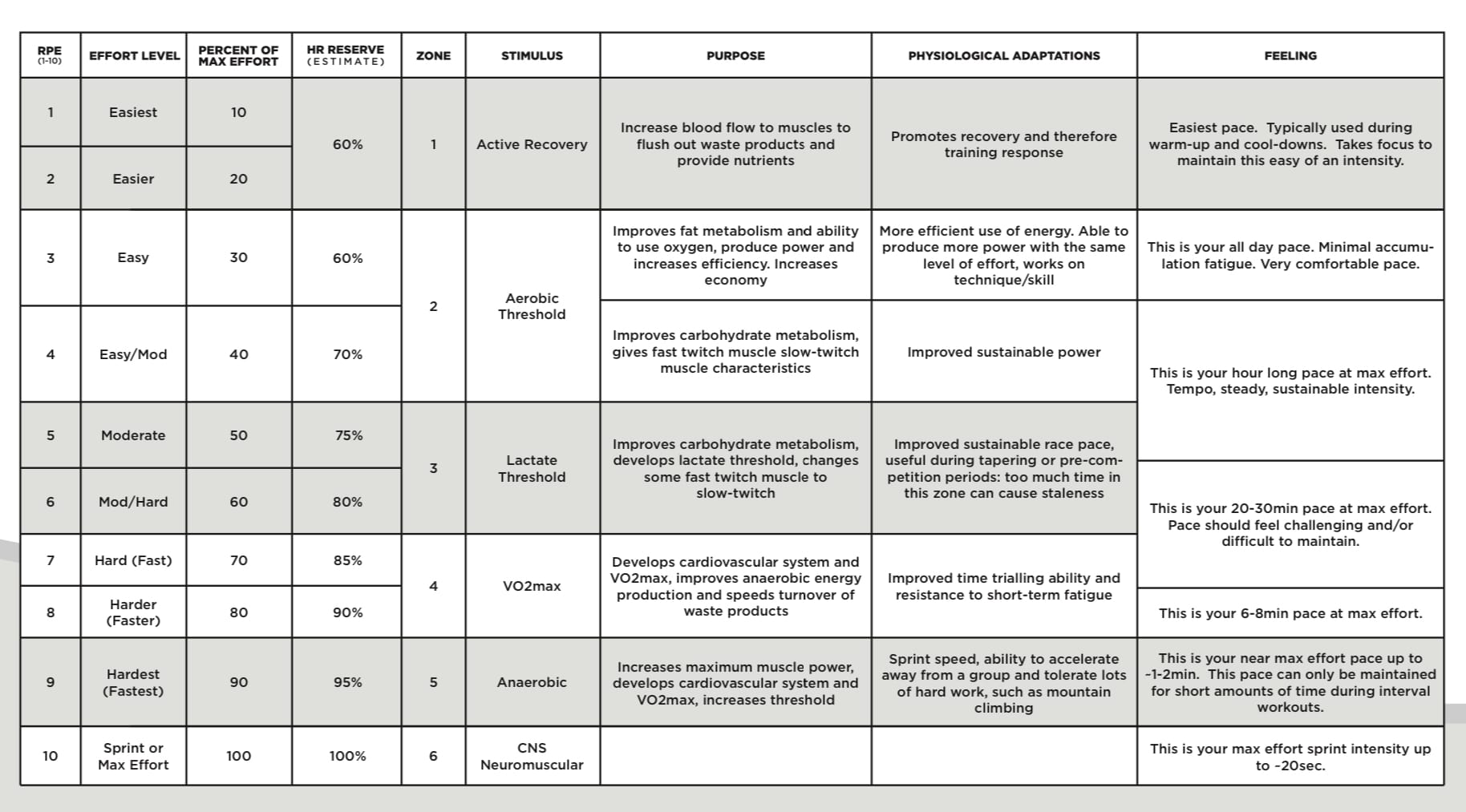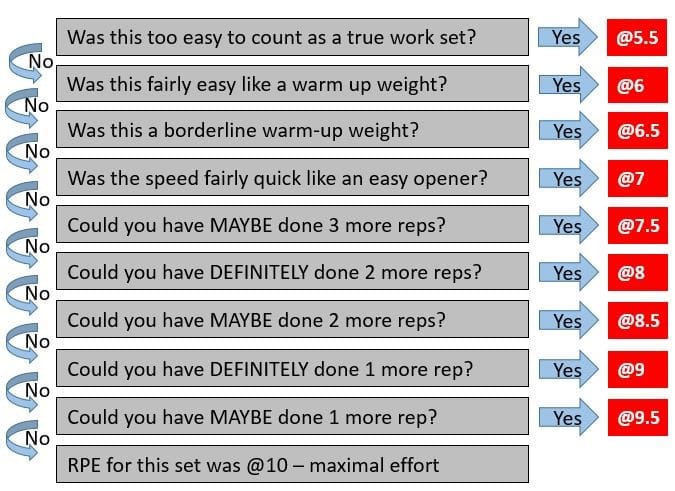Rate of Perceived Exertion (“RPE”) is used to measure the intensity of your interval or how hard you, as an individual, had to work to complete the workout. RPE is a very simple, yet accurate way to monitor and guide exercise intensity.
The best way to track training stress is answering: "How difficult was that interval?”
The RPE scale runs from 0 – 10. The numbers are used to rate how easy or difficult you find an activity. For example, 0 (complete rest) would be how you feel when sitting in a chair; 10 (max effort) is how you feel during a max effort sprint to the finish or after a very difficult workout.
On a “perfect day” your paces for the aerobic work would match up exactly with your RPE. Some days how you feel and your RPE may mean you decrease (or increase) your paces so that it matches up with RPE, instead of feeling like you must hit the prescribed pacing or percentages exactly (examples 4x400m Run Intervals @7/10 RPE is harder today. So instead of using 70% 400m PR pacing (which would feel like 8/10 RPE, you use 60-65% of your PR Pacing that day, whatever correlates to the 7/10 RPE for the day).
The upside (especially on Saturdays) is you may feel great and get to hit paces beyond your equivalent pacing or percentages (example: on a sprint effort @10/10 RPE, you hit a new PR because your new full effort is 105% of your 1RM)
Athletes must own their pacing decisions. Using RPE will help develop and finely tune your sense of “how hard you’re working” vs. “how fast you’re going”. Learn to trust how you feel. The reality is some days you feel great! And others you don’t. Either way, that is okay! The RPE scale allows us to be flexible in our training while still getting fitter!





